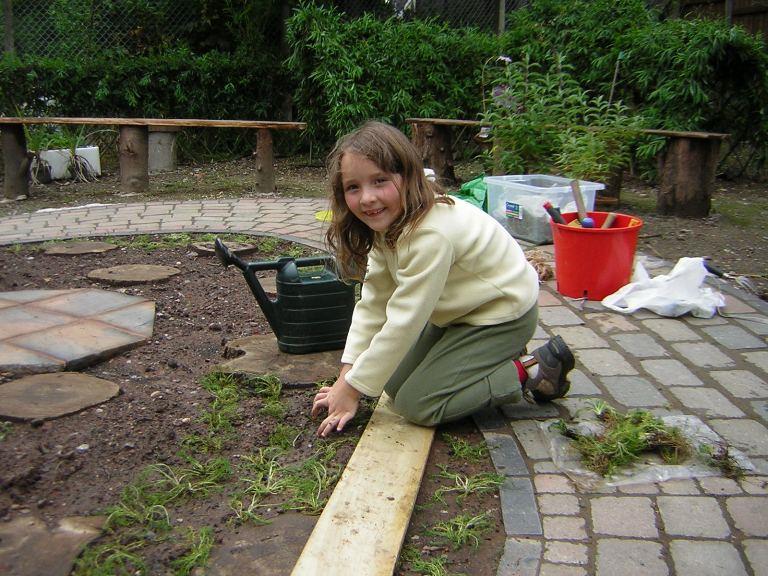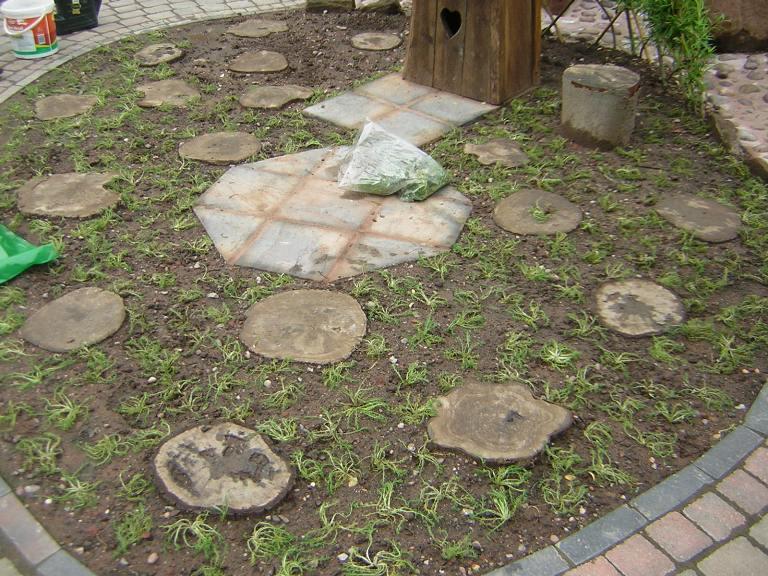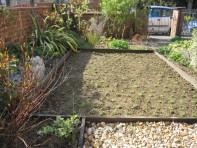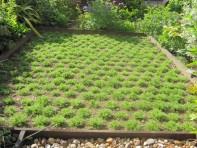Morehavens Chamomile Nursery
Cultivation
Creating a Chamomile Lawn
We supply chamomile plants in packs of 25, 50 or 100 from mid-April to thebbeginning of August.
As a guide to the number of plants needed to cover the required area – 50 plants will cover 1 square meter if they are placed 15cm (6”) apart.
The Treneague and Dwarf varieties of lawn chamomile essentially do not flower, so these varieties cannot be grown from seed but are instead propagated through division. [Seed grown chamomile plants will produce a taller, flowering lawn which will require cutting during the summer months to maintain a low sward].
The time for your lawn to cover over depends on the soil, season and the spacing of the original plants. Spaced at 15cm, a complete cover can be achieved within the growing season. Planting more closely is, of course, quite acceptable and a lawn will be created more quickly. Many customers plant late in the season, but a complete lawn may not grow until the following year.
The plants can grow to a height of 10 cm but are usually lower as walking on the lawn presses them down.
Site preparations
A chamomile lawn should be considered primarily for light-footfall and ornamental areas, it is not well-suited to heavy, continual wear.
Ensure the ground is thoroughly cleared before the plants arrive, removing large stones and eradicating weeds, especially perennial weeds such as couch grass, clover or bindweed. It is well worth spending time to clear as many weeds and large stones a possible, as thorough site preparation is fundamental to a successful lawn.
Preparing the soil
As a herb, chamomile grows best in well-drained soil in a sunny situation. The plants need a light, free draining, neutral or slightly acid soil, at least 10cm (4”) deep. The soil must not be too dry, an amount of moisture is required. Chamomile does well in clay soils, provided the drainage and aeration are improved by incorporating sharp sand or grit and some organic matter.
Dig over the soil, ideally to a spade depth, removing any roots and stones that are unearthed. Level the soil, firm and rake over for a fine tilth. A general purpose fertiliser can then be applied; the ground should not be too rich – aim for fairly fertile soil – as too much fertiliser may cause the chamomile shoots to grow a little too long, on the other hand, too little can stunt growth.
When the plants arrive
Morehavens supply individual, mature, bare-rooted chamomile plants. They arrive without soil so should be planted as soon as possible after arrival.
Planting
We find the best method for planting is to make a 10cm (4”) deep hole for each plant using a dibber. Place the plant in the hole with the roots well buried, then firm in. You can lay a plank across the soil to prevent leaving footprints in the soft soil. Water the plants in well and maintain moist soil for at least two weeks while the plants establish.
Aftercare and maintenance
Keep your lawn well-watered in the first season as the lawn establishes, especially during dry spells over the summer. Strive to pick out weeds as they appear, keeping the area as weed free as possible. Wait a while before walking on your new lawn; depending on the growing season and planting time of year, we recommend waiting 8-12 weeks.
Chamomile plants spread by producing shoots during the summer months which root in the Autumn to form new plants, ready to start afresh in the Spring. To maintain a dense camomile sward, it is important that the new shoots root successfully. Once your lawn is established, walking, sitting, or lying on your lawn regularly helps to press the shoots into the soil, which in turn helps rooting. It also releases the aroma which smells sensational!
In addition to pressing down the plants periodically, we recommend applying a top dressing in the Spring or Autumn to help cover any shoots that have yet to root. The top dressing can be a mixture of sieved soil and fertiliser or compost, placed carefully around the plants taking care not to smother them.
Once established, chamomile does not need much watering or cutting, but a light trim with shears around the edges may be necessary.
Do not use selective lawn weedkillers as they will also kill the camomile plants.
Dwarf chamomile being planted
A newly planted lawn.
Our plants are grown in the open
and are fully hardy, so they can be
planted directly into the ground.
After 3 to 4 weeks, the plants have
established and begun to spread.
A few weeks later and the plants are
filling the gaps
By the end of the season a lawn or a
path is complete.








